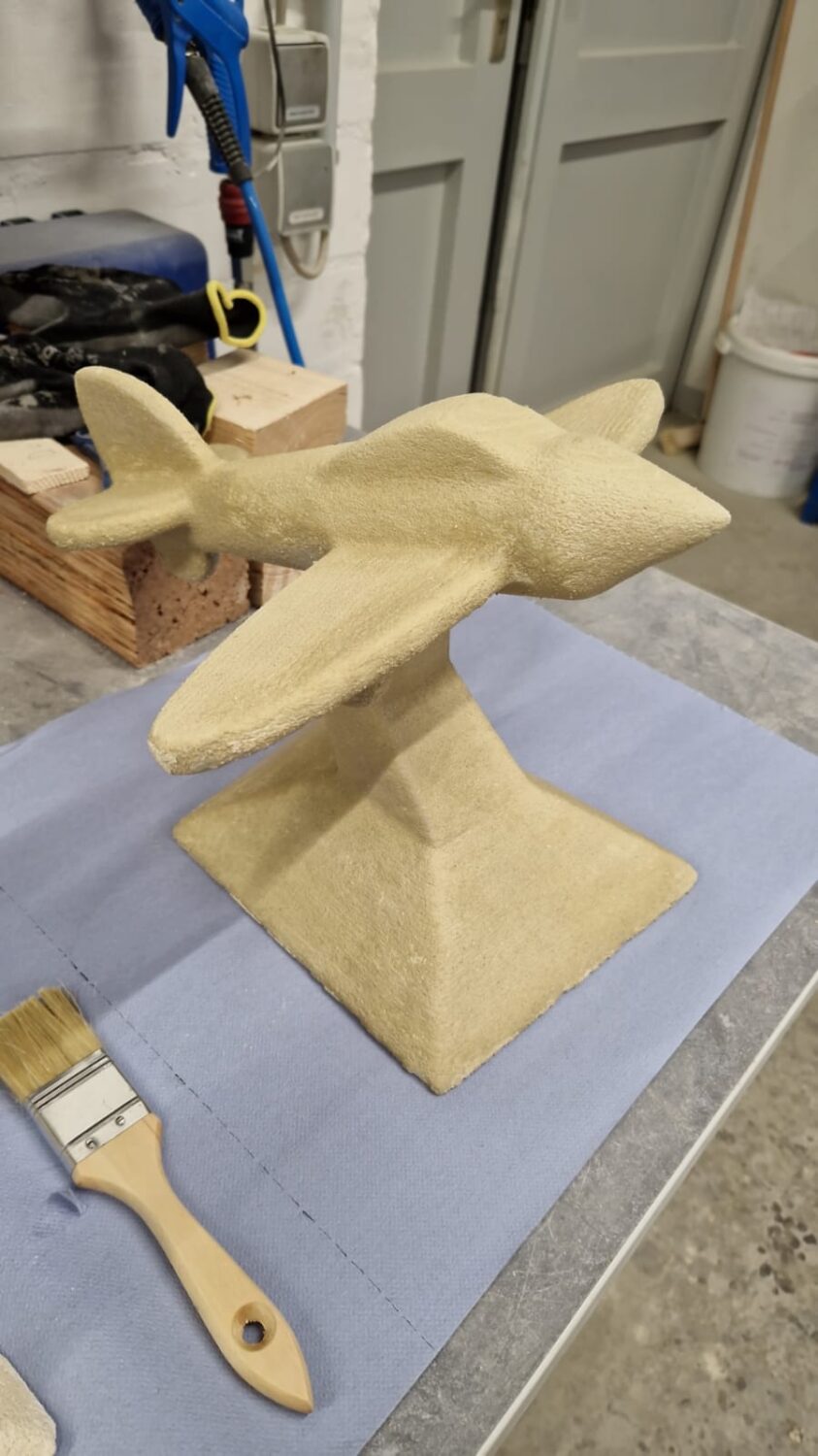Research Summary Report of A01
Particle-Bed 3D Printing by Selective Cement Activation (SCA) – Particle Surface Functionalisation, Particle-Bed Compaction and Reinforcement Implementation
[10.03.2023]
Herding, Friedrich; Researcher, f.herding@ibmb.tu-bs.de
Mai, Inka; Researcher, mai@tu-berlin.de
Lowke, Dirk; Project leader, d.lowke@ibmb.tu-bs.de
TU Braunschweig, Institute of Building Materials, Concrete Construction and Fire Safety (iBMB)
The main objective of our research is to understand the material-process interactions in particle-bed 3D printing (PB3DP) by Selective Cement Activation (SCA) in order to produce concrete elements with high mechanical strength and geometric precision. Besides, we are also investigating different ways of reinforcement integration, which is crucial for the manufacturing of load-bearing building components.
Summary
In particle-bed 3D printing by Selective Cement Activation the particle-bed consists mainly of a mixture of sand and cement. After being scattered into the build chamber, the particle-bed mix is smoothed and subsequently compacted by a roller. Then, the cement is selectively activated by precisely jetting water onto the particle-bed. Previous research, e.g. Lowke et al. (2022), has shown the importance of a high packing density of the particle-bed regarding the compressive strength of printed elements. By increasing the compaction height, i.e. the amount of compaction applied onto the particle-bed, the packing density is increasing. This is associated with in an increase of the coordination number, i.e. the total number of particle contacts, providing an increase in compressive strength by up to 60 %.
Current state of research
In recent studies by Talke et al. (2023) the effect of the rotational and translational speed of the scattering roller (nscatter, vscatter), the translational velocity of the smoothing roller (vsmooth), the translational velocity of the compacting roller (vcomp) and the compaction height (hcomp) on the particle bed’s packing density was investigated. All parameters influence the packing density of the particle-bed. Faster rotational speed or slower translational speed during scattering led to a higher amount of scattered particles, which increased the packing density. A slower translational velocity during smoothing and compaction also increased the packing density. The packing density also increased with increasing compaction height. However, the formulation of material bow waves, as seen in Fig 1, was found to interfere with compaction, with the packing density decreasing with the occurrence of the wave.
Lowke, D.; Mai, I.; Keita, E.; Perrot, A.; Weger, D.; Gehlen, C.; Herding, F.; Zuo, Wenqiang; Roussel, N.: Material-process interactions in particle bed 3D printing and the underlying physics. In: Cement and Concrete Research 156 (106748) (2022) 10.1016/j.cemconres.2022.106748
Talke, D.; Saile, B.; Meier, N.; Herding, F.; Mai, I.; Zetzener, H.; Kwade, A.; Lowke, D. (2023): Particle-bed 3D printing by selective cement activation – Influence of process parameters on particle-bed density. In: Cement and Concrete Research 168 (2023) (107140)
10.1016/j.cemconres.2023.107140
Fig 1: Highspeed camera image taken during the particle-bed compaction with high compaction (hcomp =0.9 mm) showing a material bow wave in front of the compaction roller / Credit: iBMB
Fig 2: high-resolution 3-D printed aircraft illustrating SCA’s ability to print overhangs without problems / Credit: iBMB
Fig 3: Highspeed camera video taken during the particle-bed compaction with high compaction / Credit: iBMB








